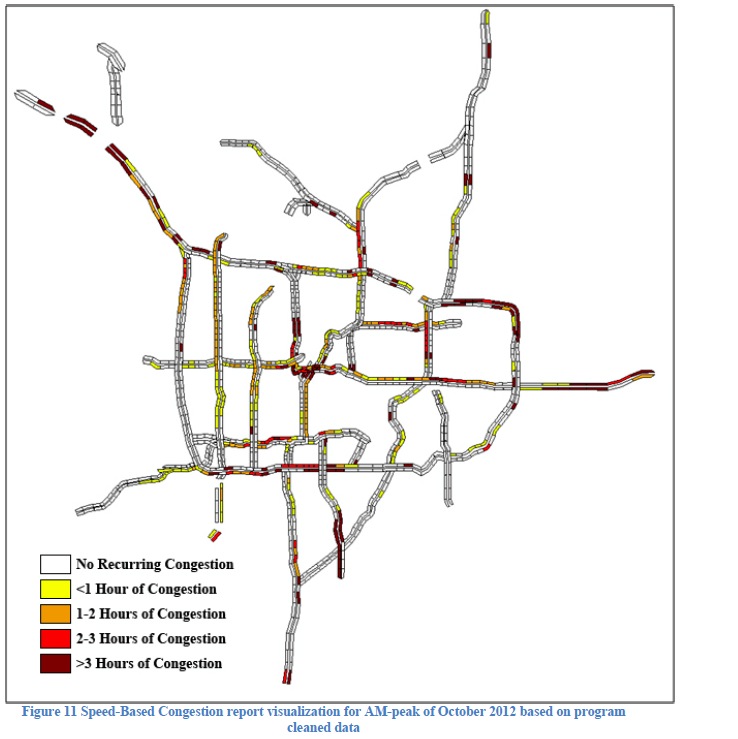MINNESOTA DEPARTMENT OF TRANSPORTATION
UNIVERSITY OF MINNESOTA DEPARTMENT OF CIVIL ENGINEERING
Executive Summary
The Twin Cities freeway network is a densely instrumented and growing transportation system. As the Minnesota Department of Transportation (MnDOT) pursues a performance-based management strategy to monitor the health of the network and make planning and management decisions, the data from this vast network is being examined using a variety of methods. To provide MnDOT with timely performance information regarding the Twin Cities freeway network, a streamlined program was developed based on existing and new methodologies. The Highway Automated Reporting Tool (HART) utilizes a user-friendly interface for corridor, date, time, and report selection. Selected data are automatically examined to identify and correct errors and produce ‘cleaned’ data for use within each report. Using interpolation and autoregressive integrated moving average (ARIMA) techniques, small errors are corrected in place while preserving as much useful data as possible. Larger issues are corrected using an imputation algorithm relies on nearby sensors and historical data to create representative replacement data.
In this first version of HART, four reports are included: Speed-Based Congestion, Congestion Intensity, Lost and Available Capacity, and Maximum and Total Throughput. The Speed-Based Congestion report matches the existing methodology used to generate the annual Congestion Report. Through HART, the congestion report can more easily and quickly be generated. The other reports extend the performance-based management toolbox available for MnDOT engineers and planners to better examine congestion, the behavior of bottleneck locations, and the potential benefits stemming from investments in the network. The Congestion Intensity report extends the congestion report to account for the number of lanes present across the network and highlights severe congestion at multi-lane segments of the system. The Lost and Available Capacity report identifies the amount of ‘potential’ that is lost during congested conditions and the spare capacity that is available for locations that do not experience breakdowns. This report, in particular, has the possibility to help direct planning and investment to locations across the system that have the most potential for efficient improvement. Finally, the Maximum and Total Throughput report shows the usage pattern across the network.
HART was developed to not only tie in with existing MnDOT methodologies and reporting structures but also to be extensible and modifiable. As HART is used to examine the Twin Cities system, new performance measures can be easily integrated into the program and existing methodologies can be augmented to more directly serve planning and management needs. Throughout these performance measure modifications, the core of HART’s data cleaning and imputation algorithms can also be reexamined to improve these methodologies, resulting in increasingly accurate analyses of the Twin Cities freeway network.
About the Minnesota Department of Transportation
www.dot.state.mn.us/
Minnesota’s multimodal transportation system maximizes the health of people, the environment and our economy. MnDOT’s mission is to Plan, build, operate and maintain a safe, accessible, efficient and reliable multimodal transportation system that connects people to destinations and markets throughout the state, regionally and around the world.
About the University of Minnesota Department of Civil Engineering
www.ce.umn.edu/
“The Department of Civil Engineering creates and disseminates knowledge and technologies applied to the built and natural environments. We develop innovative solutions for the design, construction, and operation of sustainable infrastructure systems that ensure the safety, health, and well-being of society. Knowledge is disseminated via classroom and outreach instruction, by mentoring and advising students, by presentations at professional meetings, and by articles, books, and other written documents.”
Tags: Minneapolis, Minnesota, Minnesota Department of Transportation, MN, MnDOT, St. Paul, Twin Cities, University of Minnesota







 RSS Feed
RSS Feed